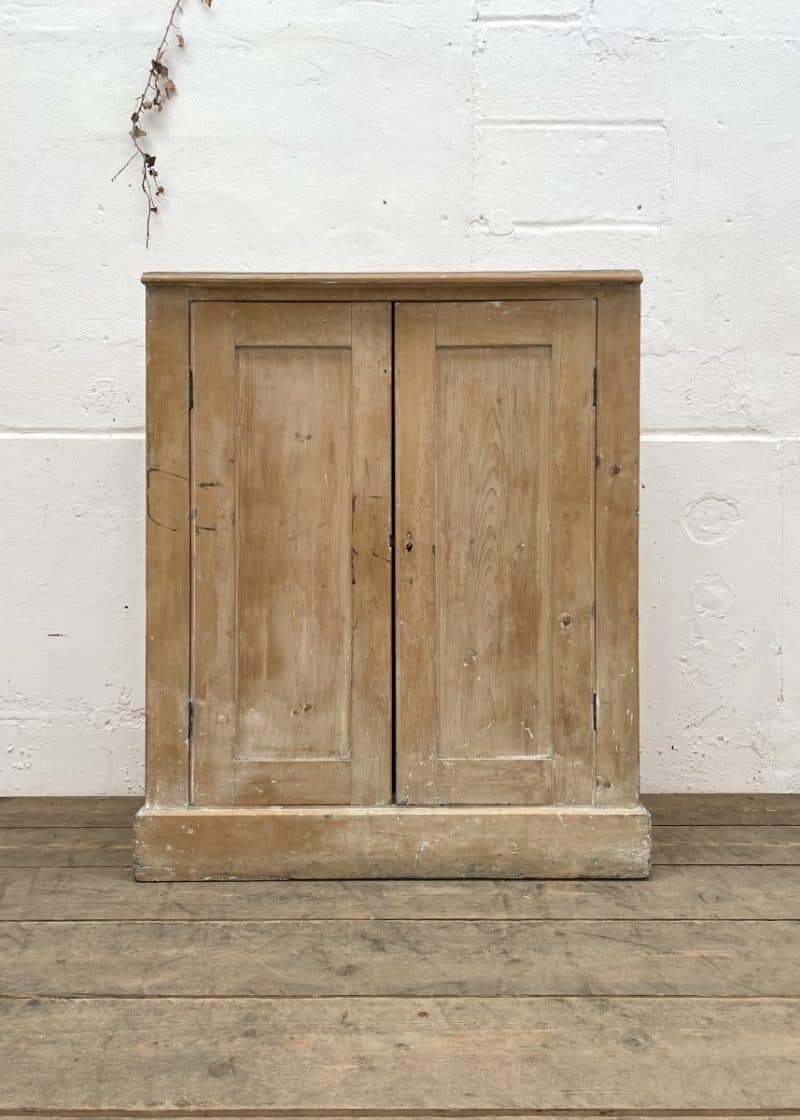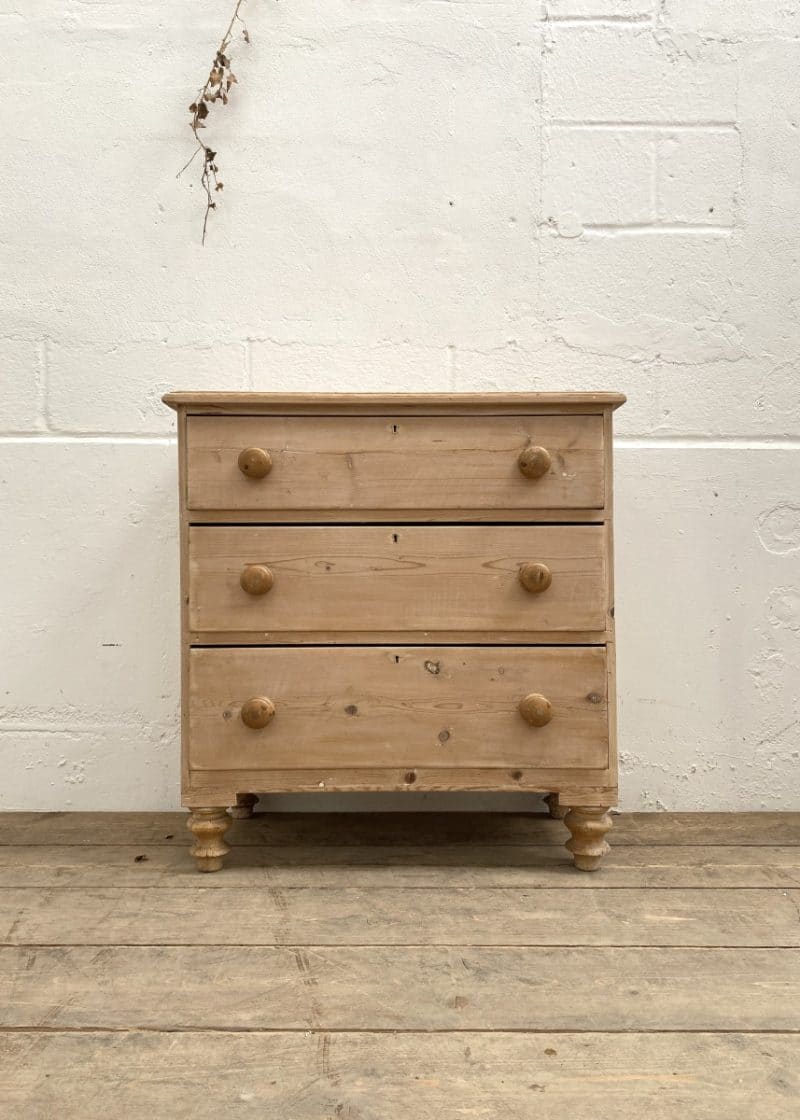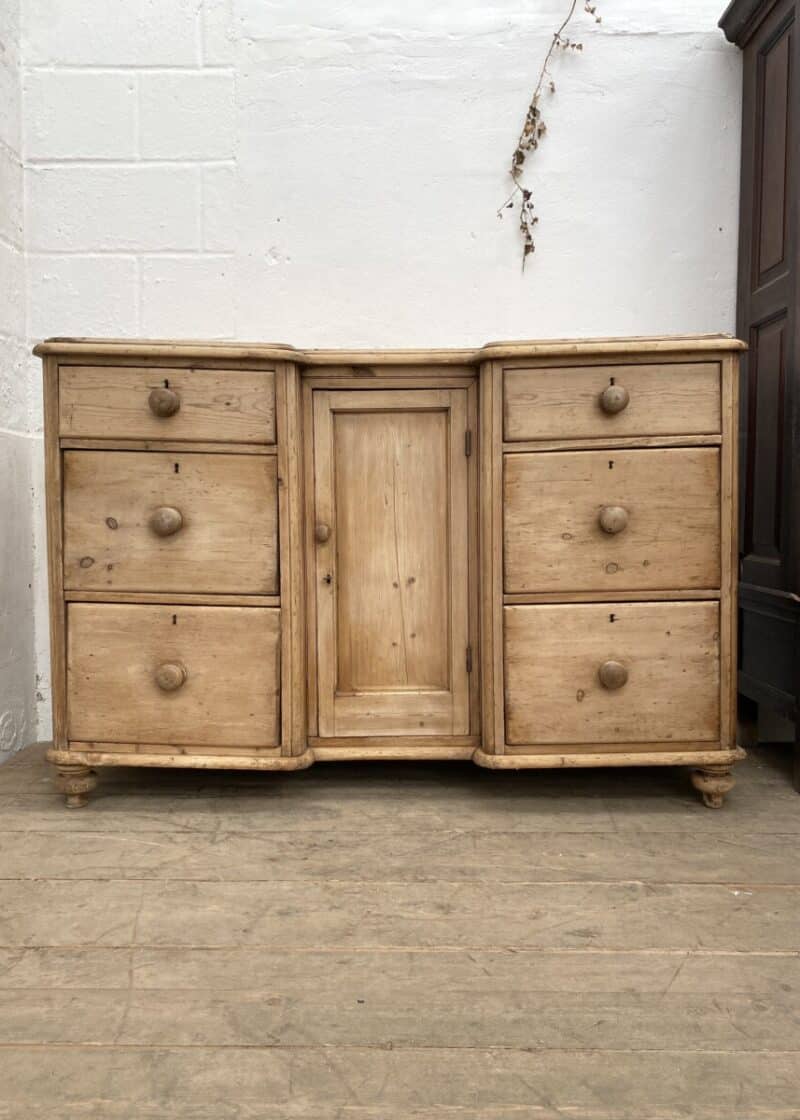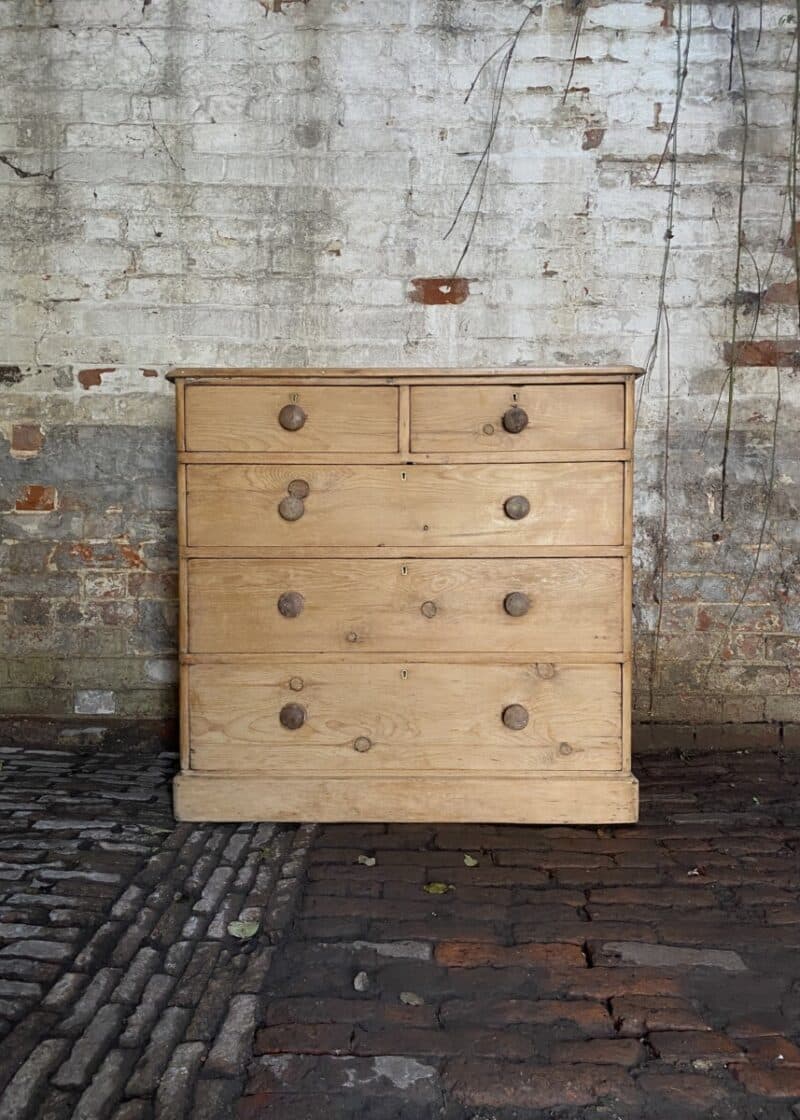Showing 1–12 of 16 results
-
Victorian pine cupboard
£480.00Pine cupboard dating from the late Victorian era c.1890
English and believed to originate from the northern sector of the country
Painted from the 50s, the previous owner stripped the outer cupboard, leaving a subtle white washed finish to the exterior. As commonplace, the lower plinth has good wear. Knocked a thousand times, building a story. A pleasant addition is the working lock and key
-
Pine larder cupboard
£575.00Pine farmhouse larder cupboard
A light pine panelled frontage framed in a heavy pitch pine. A hand cut cornice and lower trim add depth and interest
The interior consists of a double shelved upper section and a singular lower half
Large, functional and built to last a lifetime
-
Pine set of three drawers
£320.00Pine set of three graduating drawers
English and dating from the latter part of the Victorian era c.1890
Originality is key. Carcass, backboard and drawers. Hand turned feet in the English manner. The fruitwood knobs add an ever so slight contrast and warmth to the overall appearance of the drawers
-
Victorian pine cupboard
£400.00Victorian pine cupboard
English in design and dating from circa 1870-1890
Full of farmhouse design. Knotty pine, old nails, plank top all enhance its charm. Internally, there are a pair of shelves creating three storage compartments
-
Dutch pine sideboard
£950.00Dutch pine sideboard c.1880
A centralised shelved cupboard is bound by six graduating drawers of considerable size. Plentiful room to keep things in order or maybe to just hide all of those pieces that may come in handy one day
Generous in scale. A majority of sideboards are neither this depth or height
-
Painted pine larder cupboard
£880.00Painted pine larder cupboard
Victorian c.1870-1890
Well proportioned non invasive size and scale. Suitable for a variety of uses throughout the home, from the kitchen as a pantry cupboard, the living room to store the children’s arts and crafts, through to the hallway for those bits and bobs
Original base coat paint. The main body was scraped and then stripped to being back as much originality as possible. A double shelved interior and a large drawer sits below
-
Victorian pine chest of drawers
£395.00Victorian pine chest of drawers
English c.1880
Two over three design, all sitting on its own plinth. A good rich colour with plenty of depth
-
Painted pine church cupboard
£265.00Painted pine church cupboard
An English piece and dates to the turn of the 20th century. It sat in a church in South Essex
Petite in size and stature. Probable storage would have been books, possibly bible storage. A later glazed scumble was taken away to reveal and save as much as possible of an early painted finish
A decorative cornice sits above a pair of double doors, inside a shelved interior. The cupboard sitting on a plinth base. Overall, a rather hefty in weight piece of storage for that gap in your home
-
Farmhouse kitchen dresser
£795.00Farmhouse kitchen dresser
French in design. Late 19th century
Subtly unique and interesting aesthetic. A pair of cupboards flank two small but handy drawers, below sits an open shelf in the dog kennel manner
Likely the original brass hardware. Tarnished through time. The plinth is a mid 20th century replacement, commonly due to rot
The dresser being French, it has been the target of historic woodworm, creating a rustic, tactile surface
-
Mid 19th century painted chest of drawers
£380.00Mid 19th century painted chest of drawers
English and dating in the era of 1850-1870
Multiple layers of 20th century paint were removed, exposing the drawers original yellow and cream finish
The drawers consist of two smaller drawers above a pair of graduating drawers. Four original knobs and a pair of similarly aged knobs are replacements
A unique interior design led item
-
Scottish painted chest of drawers
£440.00Scottish painted chest of drawers
Mid Victorian era c.1870
Large in stature. The main body retains a vast amount of its original painted finish whilst the drawer fronts have retained less due to touch and wear
These drawers are quite possibly estate made due to the rather unusual yet interesting pair of top drawers frontage. These individual takes on design were primarily due to the original owners needs. However, like nowadays, there are the eccentrics who enjoy unique aesthetic design
-
English pine chest of drawers
£420.00English pine chest of drawers c.1890
Two smaller drawers sit above three full width drawers. Sitting on a cured plinth base
A soft mellow colour. Simple, clean and timeless design, suited to both period and contemporary interiors





















